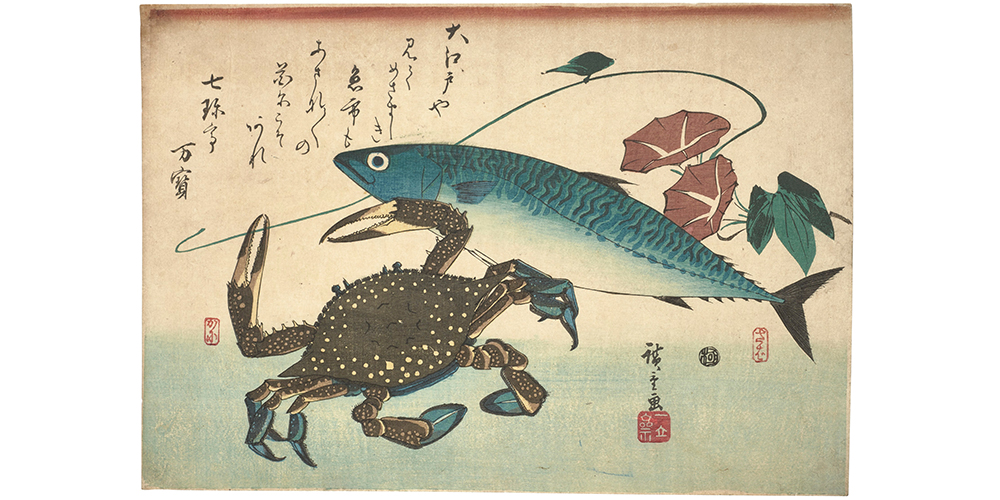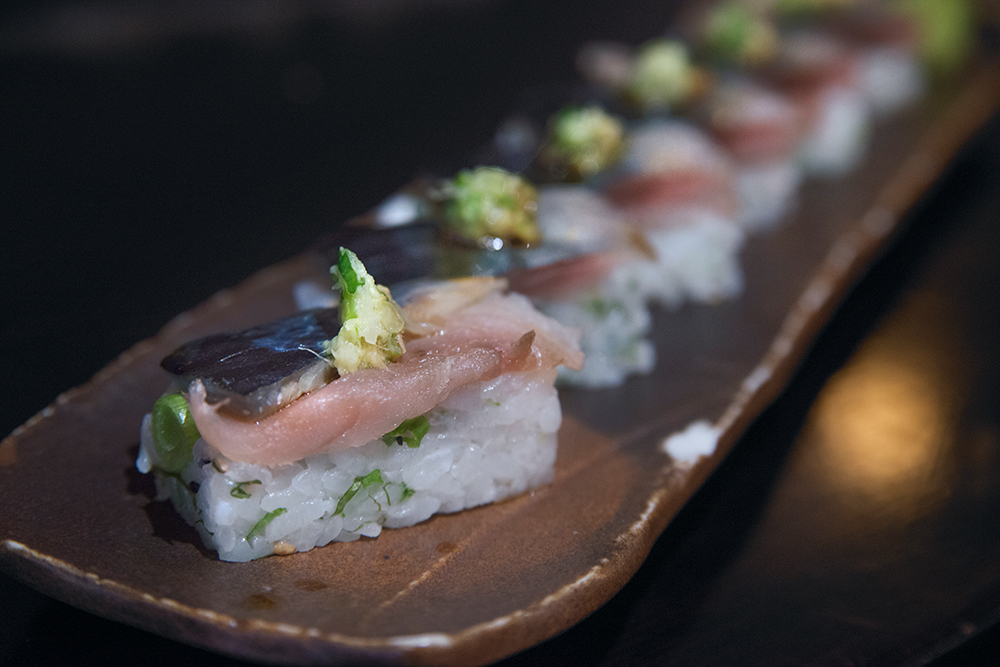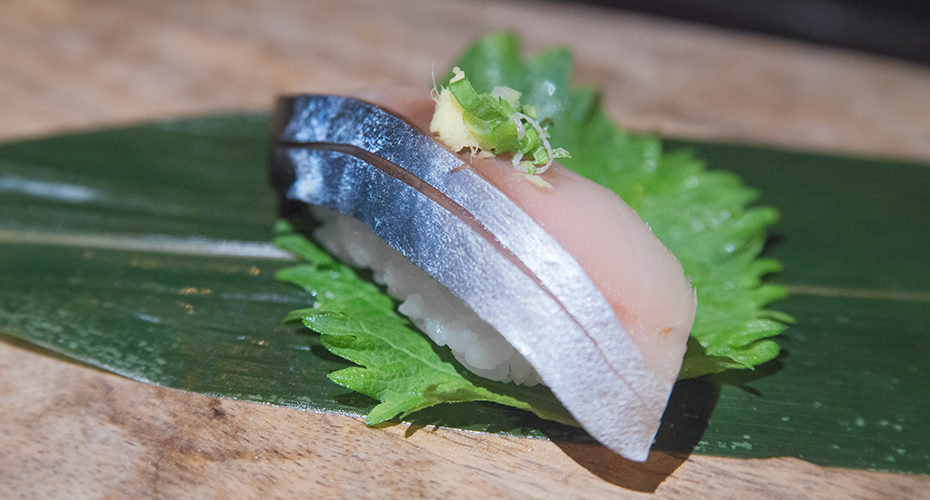Saba sushi is a traditional item that often strikes fear into the hearts of Westerners. But this little fish can be delicious and is also very nutritious.
This post sings the praises of saba. Learn what it is, what it really tastes like, classic dishes, how to prepare it, and beverage pairings.
What is Saba?
Saba is mackerel. It’s a staple fish in sushi cuisine and is also frequently grilled. Saba is often marinated in vinegar and salt before it’s sliced into sushi or sashimi. This preparation is called shime saba.
Saba is considered a type of hikarimono, or silver-skinned fish. This loose class of sushi fish is oily, fatty, and often degrades quickly. Saba is frequently pickled because of this rapid degradation.
Pacific mackerel (chub mackerel) Scomber japonicus is the standard species used to make saba. The Atlantic mackerel, Scomber scombrus, is the next most common species used for making saba.
This saba sushi is part of an informative sushi and sashimi guide. Check it out if you want to take your sushi game pro.

What Does Saba Taste Like?
Mackerel is an oily fish with a rich flavor. It has a firm texture but is also tender. Marinated shime saba has a mild sweet, sour and salty taste.
Saba does have a mild fishiness, if not super fresh.
Saba Sushi
Saba is served several ways as sushi.
Saba Nigiri
Saba nigiri is a classic type of Edomae sushi. You’ll find it raw on occasion. But it’s much more common to find shime saba.
Grated ginger and scallion are often placed on top of mackerel sushi, including saba.

Battera Sushi
Battera (バッテラ) is a type of pressed sushi that often uses saba.
The name comes from the Portuguese word for a ship: bateira. This was because the original version used gizzard shad with the tail attached. Finished battera sushi looks kind of like an old-school ship.
Battera sushi is not very common outside of Japan. But some chefs can make it, so you just need to ask. This style of sushi can be made at home too. You’ll need an oshiwaku. This wooden mold will press the sushi into a rectangle.
Gari Saba Roll
The gari saba maki is a bit more modern. But it relies on the classic combination of mackerel and ginger. In this case, pickled sushi ginger is used, which is also called gari.
There are two ways to make gari saba rolls. One is with the nori seaweed on the outside (hosomaki). The other is a larger inside-out roll (uramaki).
Saba Sashimi
Saba sashimi is less popular than saba sushi. But you can still request it. It’s simply thin slices of raw or pickled saba.
Sashimi is a great way to enjoy the flavor and texture of saba by itself.
How to Prepare Shime Saba
Check out this video from Hiroyuki Terada – Diaries of a Master Sushi Chef below. He outlines how to fillet and marinate saba.
Saba Shioyaki – Salt Grilled Mackerel
Salted and grilled mackerel is a staple of Japanese restaurants. Mackerel is fatty enough to handle the grilling process. The salt compliments its oily nature, as well. And umami is enhanced by cooking the fish.
Daikon oroshi and lemon are often served on the side.
Beverage Pairings for Saba
A rich, oily fish like mackerel really benefits from a good pairing. Sake is a classic, of course, but wine has its place too.
The following pairings will work with raw saba, shime saba, or grilled mackerel.
Sake & Saba
Sake is often delicious with saba sushi and sashimi. The umami of both tends to marry and enhance one another. And citrusy characteristics are common in sake. This trait compliments saba’s rich, oily flavor.
Basically, most styles of clear sake work really well.
Diving deeper, a bright acidity is preferred as a palate cleanser. The substyles kimoto and yamahai often have this characteristic.
If you really want to nail it, sake with an herbal character is especially good with saba. This can prove hard to find without tasting a lot of sake. But the rice grain omachi often exhibits an herbal quality.
Check out my Sake Grades and Styles post if you want to learn more about the different types of sake. And afterward, take a look at my Top Sake page if you want to find some classic examples of the different types of sake.
Wine & Mackerel Pairings
Sauvignon blanc and mackerel. Just try it, please! It’s like they’re made for each other, as long as the wine isn’t oaked.
But there are other grape varietals/ regions that make good wine for mackerel. Riax Baixas (albarino), Fruili pinot grigio, Muscadet, (unoaked) Chablis, and all types of sparkling wines can pair nicely with mackerel.
31 Days of Sushi
If you find this post useful or enjoyable, I suggest you check out some of the other content in my 31 Days of Sushi campaign.
Every day in August I’ll share a new piece of content. Topics are centered around nigiri and maki sushi. I include sashimi info, as well.
It’s like an omakase of sushi information!
What Do You Think About Saba?
Do you love it, hate it, or are indifferent?
Also, do you have a favorite mackerel dish?
Please share your thoughts by commenting below!

When it’s made correctly I love it. Too mushy and vinegar intense with not enough salt is horrible.
Yep– I completely agree. I don’t eat saba from places I don’t trust.
It’s a little like sgombro al aceto, with a salting step instead of parboil. I pull off the skin earlier in the process, since it looks kind of impermeable to me.